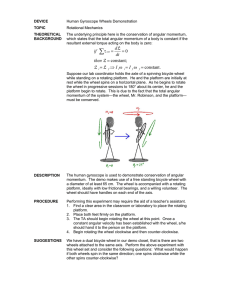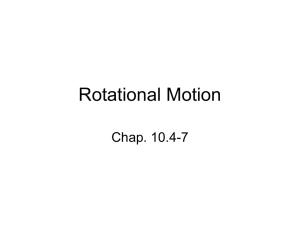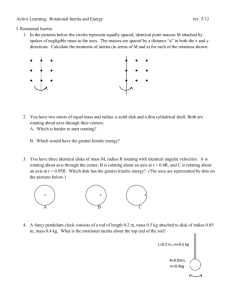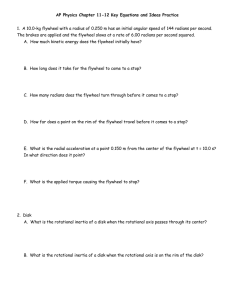DEVICE TOPIC THEORETICAL Moment of Inertia Using Cylinders
advertisement
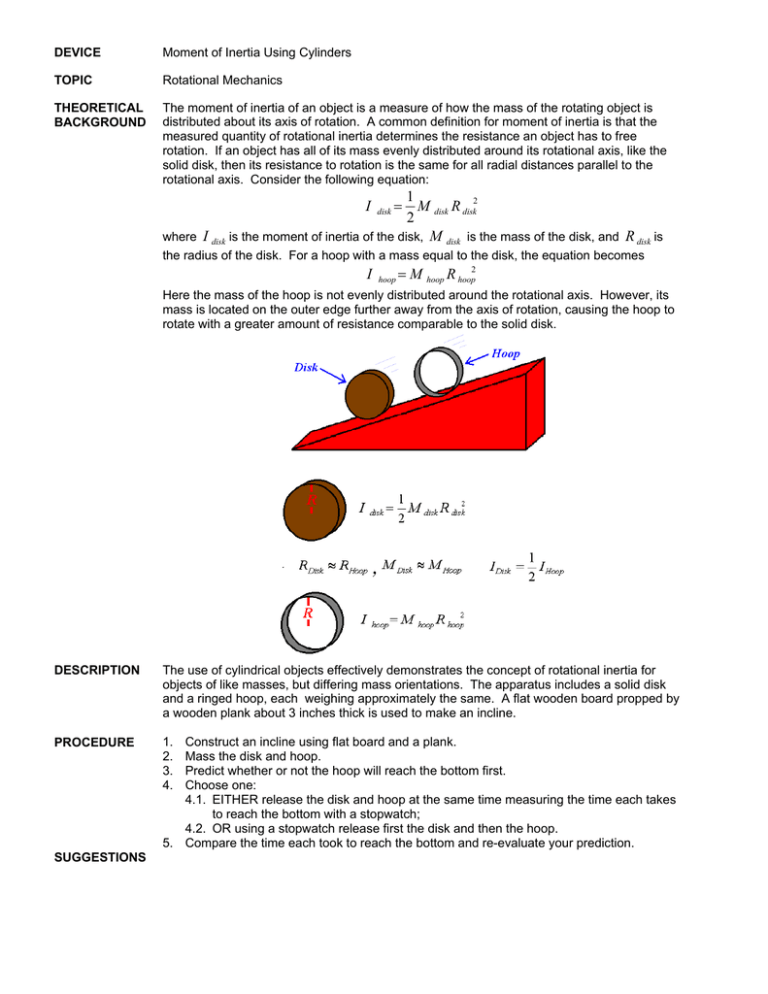
DEVICE Moment of Inertia Using Cylinders TOPIC Rotational Mechanics THEORETICAL BACKGROUND The moment of inertia of an object is a measure of how the mass of the rotating object is distributed about its axis of rotation. A common definition for moment of inertia is that the measured quantity of rotational inertia determines the resistance an object has to free rotation. If an object has all of its mass evenly distributed around its rotational axis, like the solid disk, then its resistance to rotation is the same for all radial distances parallel to the rotational axis. Consider the following equation: 1 M disk R disk2 2 where I disk is the moment of inertia of the disk, M disk is the mass of the disk, and R disk is I disk = the radius of the disk. For a hoop with a mass equal to the disk, the equation becomes I hoop = M hoop R hoop2 Here the mass of the hoop is not evenly distributed around the rotational axis. However, its mass is located on the outer edge further away from the axis of rotation, causing the hoop to rotate with a greater amount of resistance comparable to the solid disk. DESCRIPTION The use of cylindrical objects effectively demonstrates the concept of rotational inertia for objects of like masses, but differing mass orientations. The apparatus includes a solid disk and a ringed hoop, each weighing approximately the same. A flat wooden board propped by a wooden plank about 3 inches thick is used to make an incline. PROCEDURE 1. 2. 3. 4. SUGGESTIONS Construct an incline using flat board and a plank. Mass the disk and hoop. Predict whether or not the hoop will reach the bottom first. Choose one: 4.1. EITHER release the disk and hoop at the same time measuring the time each takes to reach the bottom with a stopwatch; 4.2. OR using a stopwatch release first the disk and then the hoop. 5. Compare the time each took to reach the bottom and re-evaluate your prediction.

